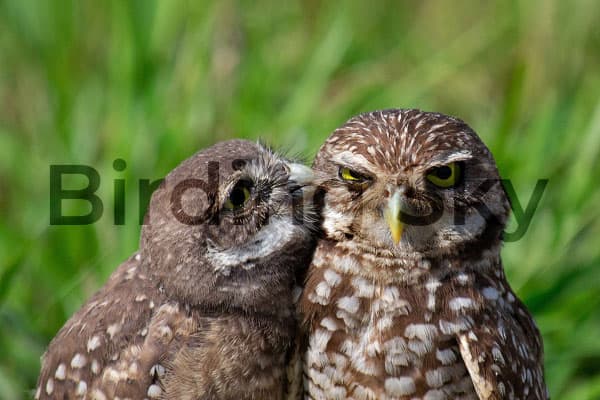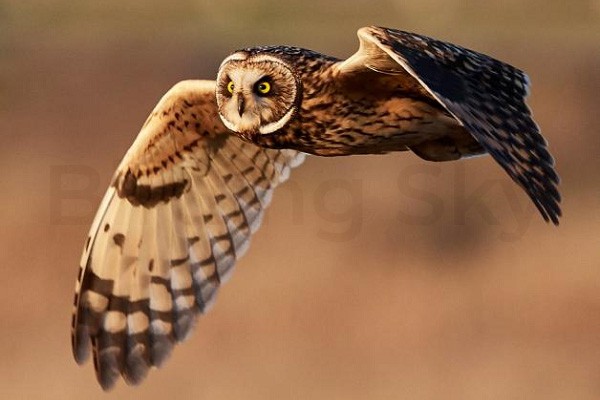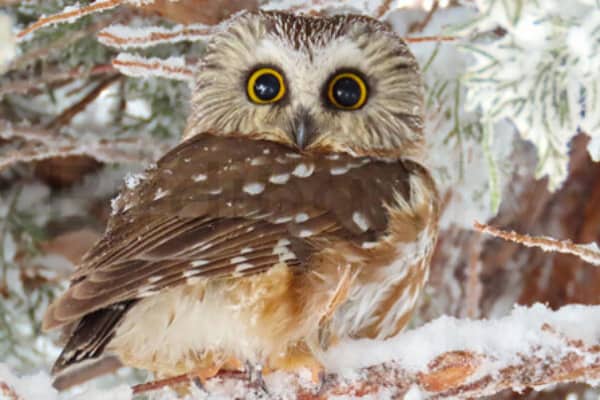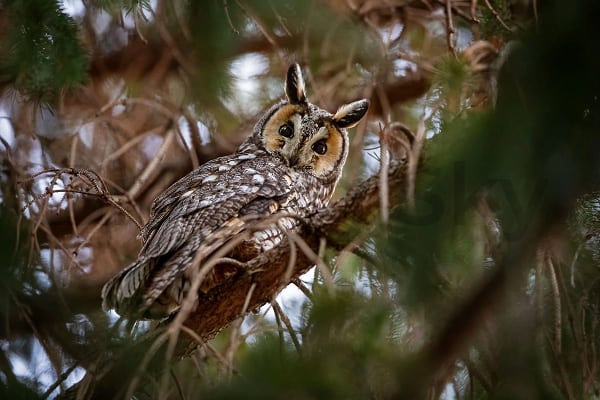Have you ever wondered about the owls that call Georgia home? With its diverse habitats and rich wildlife, Georgia is a haven for a variety of owl species. From the iconic great horned owl to the elusive snowy owl, these majestic creatures captivate our imagination and remind us of the hidden wonders of nature.
Join us on a journey through the enchanting world of owls in Georgia. In this article, we will delve into the lives of 11 fascinating owl species, each with its unique traits and behaviors. Prepare to be awed by their beauty, intrigued by their hunting techniques, and inspired by their resilience on a journey through the enchanting world of owls in Georgia. In this article, we will delve into the lives of 11 fascinating owl species, each with its unique traits and behaviors. Prepare to be awed by their beauty, intrigued by their hunting techniques, and inspired by their resilience.
Types Of Owls That Live in Georgia (Common & Rare)
Barred Owl
Georgia is home to many captivating owl species, and one that stands out is the barred owl. As one of the common owl species found in Georgia, the barred owl has distinctive features and fascinating hunting behavior.

The barred owl, also known as the Strix varia, is medium-sized with a round head and dark eyes. One of its standout features is the vertical bars on its chest, hence the name “barred” owl. These bars form a unique pattern that sets it apart from other owl species.
This owl typically inhabits mature forests, swamps, and wooded areas. It prefers dense, moist woodlands where it can find ample coverage and a sufficient prey base. Georgia’s diverse landscape provides ideal habitat for the barred owl, making it a familiar sight for nature enthusiasts exploring the region.
When it comes to hunting, the barred owl is known for its versatile behavior. It primarily feeds on small mammals such as mice, voles, squirrels, and rabbits. However, it is also opportunistic and can prey on birds, amphibians, reptiles, and even fish when the opportunity arises.
“The barred owl’s hunting technique is quite unique. It uses its extraordinary hearing abilities to locate prey from a distance, and then swoops down silently, using its sharp talons to catch its target.”
Unlike other owl species, the barred owl is not shy about vocalizing its presence. Its vocalizations consist of a distinctive “who-cooks-for-you, who-cooks-for-you-all” call, which can often be heard echoing through the forests of Georgia.
To summarize, the barred owl is a common and recognizable owl species in Georgia. With its distinct features, preference for mature woodlands, and versatile hunting techniques, encountering a barred owl during a hike or nature walk can be an awe-inspiring experience.
| Barred Owl | Scientific Name | Strix varia |
|---|---|---|
| Features | – Round head – Dark eyes – Vertical bars on the chest | |
| Habitat | – Mature forests – Swamps – Wooded areas | |
| Hunting Behavior | – Versatile prey base – Sharp talons for catching prey – Vocalizations: “who-cooks-for-you, who-cooks-for-you-all” |
Great Horned Owl
The great horned owl is one of the largest owl species found in Georgia. Known for its majestic appearance, it possesses iconic ear tufts that resemble horns, hence the name.

With a wingspan of up to five feet, the great horned owl is a formidable predator. Its hunting techniques are both stealthy and powerful, making it a feared predator in the animal kingdom.
This species’ preferred habitats include forests, woodlands, and even urban areas. They are adaptable and can be found across various regions of Georgia.
Here are some key features of the great horned owl:
- Large size and iconic ear tufts
- Distinctive hooting call that can be heard at night
- Excellent hunting skills, using silent flight and acute hearing
- Prey includes small mammals, birds, and even other owls
- Adaptable to various habitats, from forests to urban environments
| Great Horned Owl | Features |
|---|---|
| Size | One of the largest owl species |
| Habitat | Forests, woodlands, and urban areas |
| Food | Small mammals, birds, and other owls |
| Call | Distinctive hooting sound |
The great horned owl is truly a remarkable creature found in the diverse landscapes of Georgia. Its imposing size, unique features, and exceptional hunting skills make it a captivating species to encounter in the wild.
Eastern Screech-Owl
If you’re in Georgia and happen to come across a small, mysterious owl with a haunting call, then chances are you’ve encountered the eastern screech-owl. This captivating owl species can be found throughout Georgia, showcasing its unique vocalizations, remarkable camouflage abilities, and interesting nesting habits.

The eastern screech-owl, scientifically known as Megascops asio, is a master of disguise. With its small size and intricate patterns of gray and brown feathers, this owl blends seamlessly into tree bark, making it difficult to spot even when perched just a few feet away. Its exceptional camouflage helps it remain hidden from predators and unsuspecting prey.
When it comes to vocalizations, the eastern screech-owl is incredibly versatile. It has various calls, ranging from eerie trills and whinnies to melodic whistles and raspy barks. These unique vocalizations are used for communication and territorial defense, adding an enchanting atmosphere to Georgia’s woodlands.
“The eastern screech-owl’s haunting calls are sure to send shivers down your spine, yet they also serve as a reminder of the remarkable diversity of nature’s soundscape.”
As for nesting, the eastern screech-owl is a cavity nester. It often takes advantage of abandoned tree cavities, but it has also been known to make use of nest boxes and even old buildings. The female owl typically lays 3 to 5 eggs, which she incubates for about a month before they hatch. Once the owlets emerge, they stay in the nest for several weeks, learning essential survival skills from their parents.
Eastern Screech-Owl Facts and Figures
| Scientific Name | Common Name | Size | Wingspan | Weight |
|---|---|---|---|---|
| Megascops asio | Eastern Screech-Owl | 7-10 inches | 18-24 inches | 5-9 ounces |
The eastern screech-owl is truly a fascinating species that adds charm and intrigue to Georgia’s diverse owl population. Its ability to blend into its surroundings, its haunting calls, and its nesting habits make it a true marvel of nature. So keep your eyes and ears open the next time you’re exploring Georgia’s woodlands, and you just might catch a glimpse of this remarkable eastern screech-owl.
Must Read About Owls in Oregon
Barn Owl
The barn owl is a fascinating owl species found in Georgia. With its distinctive heart-shaped face and silent flight, it captures the curiosity of bird enthusiasts and nature lovers alike. Let’s delve into the unique characteristics of the barn owl, its specialized hunting techniques, and the habitats it prefers.

Distinctive Features
The barn owl is easily recognizable by its heart-shaped facial disc, which helps to funnel sound towards its ears, aiding in pinpointing prey. Its large eyes enable excellent low-light vision, making it a proficient hunter during dusk and dawn.
Specialized Hunting Techniques
This nocturnal hunter employs stealth and precision while hunting. The barn owl’s silent flight, facilitated by soft wing feathers, allows it to approach prey without detection. Its exceptional hearing helps locate small mammals, such as voles and mice, rustling in the grass. Once prey is detected, the barn owl swoops down to seize it with its sharp talons.
Preferred Habitats in Georgia
Barn owls can be found in various habitats throughout Georgia, including farmlands, grasslands, marshes, and open woodlands. They often nest in barns, abandoned buildings, and hollow trees, utilizing these sheltered locations for breeding and roosting.
“The barn owl is a true marvel of nature with its unique appearance and remarkable hunting abilities.” – Dr. Sarah Peterson, Wildlife Biologist
If you ever have the chance to observe a barn owl in Georgia, take a moment to appreciate the beauty and adaptability of this remarkable bird.
Also VIist Owls in Arizona
Burrowing Owl
Did you know that the burrowing owl is a rare species found in Georgia? These fascinating creatures have a unique nesting behavior—they make their homes underground! Let’s explore some of the interesting behaviors of the burrowing owl and learn more about its affinity for open grasslands.

The burrowing owl, scientifically known as Athene cunicularia, is a small owl species that can be found in various regions of North and South America. In Georgia, it is considered a rare sight, making any encounter with this species all the more special.
One of the most remarkable aspects of the burrowing owl is its nesting behavior. Unlike other owl species that depend on trees for their nests, burrowing owls create their homes underground. They often repurpose abandoned burrows of other animals, such as prairie dogs or ground squirrels. These underground burrows provide protection from predators and help regulate the temperature for their young chicks.
When it comes to habitat preferences, burrowing owls show a strong affinity for open grasslands. These habitats provide the perfect hunting grounds for the owls, as they feed mostly on small mammals like mice, voles, and insects. Their excellent hunting skills and keen vision allow them to spot prey from quite a distance.
Not only are burrowing owls great hunters, but they also exhibit interesting social behaviors. They are known to live in loose colonies, with several pairs sharing the same area. This social structure allows them to provide protection and support to one another.
To communicate with each other, burrowing owls make a variety of vocalizations, including a series of short, low cooing sounds and a range of chirps and whistles. These vocalizations are used for mate attraction, territorial defense, and communication within their colony.
The conservation status of burrowing owls is a matter of concern, as their numbers have been declining in many areas. Habitat loss due to agriculture, urbanization, and human development poses a significant threat to their population. Efforts have been made to protect and preserve the grassland habitats that burrowing owls depend on, but further conservation efforts are required to ensure their survival.
Do You Know About Owls Found in Kentucky
Interesting Facts about Burrowing Owls:
- Burrowing owls are one of the few owl species that are active during the day, making them easier to spot.
- These owls have bright yellow eyes and long legs, which are adapted for their terrestrial lifestyle.
- They are skilled diggers and can create their burrows or modify existing ones to suit their needs.
- During breeding season, burrowing owls perform elaborate courtship displays, including bowing, nipping, and offering food.
- The average lifespan of burrowing owls is around 9 years in the wild.
Although rare in Georgia, spotting a burrowing owl can be a thrilling experience. If you find yourself in the open grasslands of Georgia, keep an eye out for these unique and captivating creatures.
Rare Owls in Georgia
Georgia is home to some rare owl species that are a treat for bird enthusiasts. These elusive creatures add to the diverse wildlife found in the state. Let’s explore the unique characteristics and habitats of the following rare owl species that can be spotted in Georgia.
Short-eared Owl

The short-eared owl is a fascinating sight, albeit a rare one, in Georgia. With its distinctive flight patterns and wingspan of up to 40 inches, this owl captures attention effortlessly. It prefers open grasslands and fields as its hunting grounds. However, due to habitat loss and degradation, its numbers are declining, making sightings all the more special. Conservation efforts play a crucial role in safeguarding this beautiful owl’s future in Georgia.
Must Explore Owls in South Carolina
Northern Saw-whet Owl

Occasionally, lucky observers may catch a glimpse of the adorable northern saw-whet owl in Georgia. Despite its petite size, measuring around 7 inches in height, this owl possesses great character. It migrates to Georgia during the winter months, seeking shelter in dense forests. Despite its small stature, its sharp beak and hunting skills make it a formidable predator. Nesting in tree cavities, it creates a cozy home for itself in the cool forests of Georgia.
Snowy Owl

In rare instances, the snowy owl visits Georgia during the winter season, providing a memorable sight for bird enthusiasts. With its stunning appearance, characterized by snowy-white plumage and piercing yellow eyes, this owl is truly a marvel to behold. It is renowned for its ability to adapt to various environments, including open fields and coastal areas. The presence of snowy owls in Georgia is often influenced by factors such as food availability and arctic weather conditions.
Long-eared Owl

The long-eared owl, another rare species found in Georgia, possesses unique ear tufts that resemble horns. These tufts play a role in communication and expression rather than hearing. This owl favors woodland habitats, where it hunts small mammals and birds under the cover of darkness. Its nocturnal habits and silent flight make encounters with this owl all the more mysterious and enchanting.
Exploring the rare owls of Georgia offers a glimpse into the diverse avian population of the state. While these species may have a limited presence, their uniqueness and beauty make them a precious treasure. Preserving their habitats and raising awareness about their conservation needs is vital to ensure that future generations can also enjoy the magic of encountering these rare owls in Georgia.
